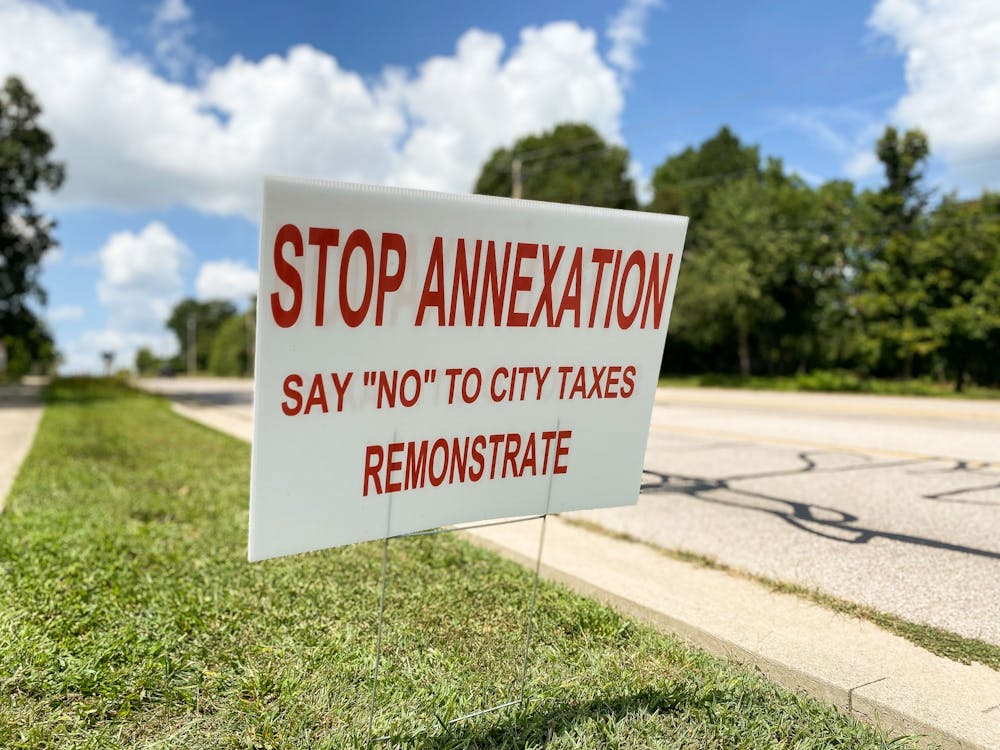The city of Bloomington is in the process of annexing additional areas located outside the outskirts of the city limits. With the somewhat recent dispute between the state and city government regarding this instance of local annexation, property owners in these annexed areas might not have any legal basis to oppose this city-wide effort.
What is annexation?
The above map illustrates each of the areas proposed for annexation. Annexation is the process by which a city extends city boundaries to include previously unincorporated, adjacent areas of the surrounding community, according to the document. This is a routine process for cities across the U.S. to extend city boundaries.
What is the procedure and timeline for annexation?
The steps necessary for annexation as laid out in the Indiana Code are as follows:
A mail notice is sent to every property owner in the proposed area of annexation including dates and times for six public outreach sessions.
Public outreach sessions are held.
The annexation ordinances are introduced in a city council meeting and physical plans are adopted.
The city publishes and informs property owners of upcoming public hearings on these ordinances.
Public hearings are held.
City Council meets to consider adoption of the ordinances.
The city publishes the adoption of the ordinances and mail information to property owners about the remonstrance process.
The city already completed steps one through three before the state legislature passed a law halting annexation only in Bloomington. On Dec. 15, 2020, the Indiana Supreme Court ruled in favor of the city, stating that Act 1427 was unconstitutional.
Since then, the city has continued this annexation process and expects the process to be completed this year, according to the document. If adopted, the city proposes to delay the effective date until Jan. 1, 2024, which postponed the final act of annexation until that year.
According to the document, this delay is to both allow the city to prepare for extended service delivery and for property owners to adjust to potential financial impacts.
What areas are proposed for annexation?
The total area is 9,255 acres with a total population of 14,377 people. According to a Aug. 10 City of Bloomington press release, Mayor John Hamilton is recommending the removal of area 7 fro
m the list.
"Located alongside our city’s northward corridor, Area 7 seems to offer gateway potential,” Hamilton said in the press release. “But additional details from residents, Council members, and facts on the ground clarify its limited prospects for development, so we are recommending that this area not be considered for annexation.”
What will change for me if I live in an annexed area?
Taxes
In a video on the city of Bloomington’s YouTube channel, City Attorney Mike Rouker explains some of the changes property owners can see in the taxes they pay.
“After annexation some folks who weren’t previously paying taxes to the city of Bloomington will begin to pay some taxes to the city of Bloomington,” Rouker said.
That tax increase would start to be paid in 2025. Property taxes in the annexed areas would increase because a municipal layer of taxes would be added, according to documents released by the city.
However, property taxes would be the only taxes affected. Rouker said annexation does not impact income, sales or any other tax a resident would pay. Certain entities, such as churches, non-profits organizations or universities would qualify for exemptions from property taxes.
Services
After annexation, some of the services recently incorporated areas can expect to receive are city policing, curbside trash and recycling collection, city street maintenance, neighborhood grants funding infrastructure and programming. Other services can be found on the services breakdown on the Annexation FAQ document.
Zoning and Property Use
According to the annexation FAQ document, any legal use of land prior to the effective date of the annexation that ultimately conflicts with the city’s zoning code or future rezoning will be grandfathered in, meaning zoning won’t change. However, certain practices which present violations in health and safety codes, such as open burning, shooting guns, violating noise ordinances, etc., would not be grandfathered in the same way.
For more information regarding fiscal plans, tax breakdowns, and general updates, visit the city’s Annexation Page.
What is remonstrance?
Remonstrance is the legal process where property owners may formally object to the proposed annexation. However, in this recent instance of annexation many property owners are unable to remonstrant for one of two reasons.
Those who live on the edge of city limits sometimes agree to sign a waiver of protest of annexation. The legally binding agreement is usually signed if property owners on the edge of city limits want to get access to some city services, such as utilities or city water.
Waivers are important to the annexation process in Indiana because those with waivers are not eligible to contest or oppose the annexation. Whether or not the waivers in Bloomington have expired is in dispute.
Under current Indiana law, there are certain conditions under which waivers can expire. The city is continuing the annexation process assuming the waivers are valid, despite a 2019 law enacted by the state legislature. Monroe County Auditor Catherine Smith, who determines who is eligible to vote for or against annexation, has said she plans to follow the 2019 law, putting the city’s plans into jeopardy.
CORRECTION: This article previously misstated the expiration of remonstrance waivers in Indiana.




